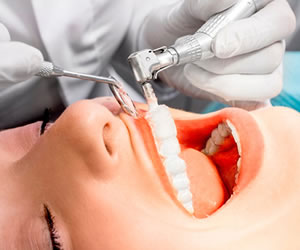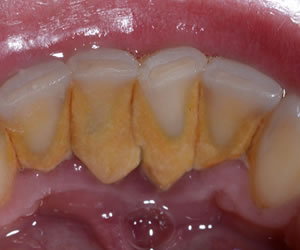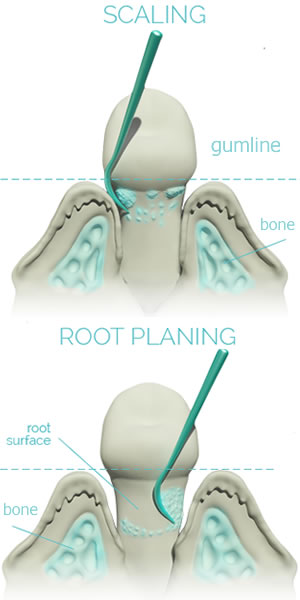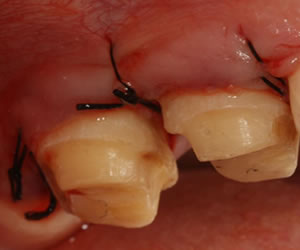Periodontal Treatments
Periodontology or periodontics comes from the Greek περί peri which means “around”, and ὀδούς odous which means “tooth”. Periodontics is the specialty of dentistry that studies supporting structures of teeth, as well as diseases and conditions that affect them. The supporting tissues are known as the periodontium, which includes the gingiva (gums), alveolar bone, cementum, and the periodontal ligament. A periodontist takes on an additional two years of university to be able to handle all these other facets of your dental care.
From a patients point of view, it’s probably one of the least understood areas of dentistry because it often does not involve the tooth directly, and so becomes a less important part of the dental care. Beware of this type of thinking however, because allowing oneself to believe that periodontal health is not as important as the dental health can lead to perfectly healthy teeth falling out of the mouth because of a lack of supporting tissue and bone.
Here are some of the Periodontal treatments that we can offer you to both maintain, or repair your periodontal conditions.

Cleaning by Periodontist
If you’d like your regular cleaning performed by the periodontal specialist this can be arranged as well. The specialist can alert you to recurrences of problems you have had in the past if you have a history of periodontal disease, or more advanced gingivitis. Generally the cleaning will be the same, however, with the services of the specialist, the cost will be a tiny bit more than a regular cleaning with the dentist. (See table below)

Deep Cleaning by Periodontist
When things have advanced to a more serious stage, you may need what is referred to as a “deep cleaning”. Sometimes there can be confusion surrounding this as some patients feel a deep cleaning means just a very good cleaning, however, the true meaning is that we have to scale deeper down the sides of the tooth. There is a great benefit in having this performed by a periodontist because if there are more serious underlying issues, they can be spotted early, and rather than just treat the symptom, it’s possible to focus on the cause.

Root Scaling and Planing
This treatment is performed normally in quadrants (1/4 of the mouth) or sextants (groups of 6 teeth) and is designed to remove the plaque and calculus below the gumline that are causing inflammation. IT becomes necessary when there has been a significant build up of plaque and tartar in the area below the gum, and pockets of 4mm or more have started to form. If left unchecked, bone loss occurs, and subsequently loss of the tooth. If nothing is done to prevent the disease from spreading, it will then affect adjacent teeth, and the problem gets worse. There are two levels of this treatment, surgical, and non-surgical.
In the non-surgical method we will numb the quadrant so that the patient will feel more comfortable while we clean very deeply around each tooth. Most of the time we recommend having 1 or 2 quadrants (half the mouth) addressed in one day. Doing all 4 quadrants is possible, however it can be very tiring for the patient to endure.
This procedure is performed ONLY by a specialist in periodontics, and not by a hygienist or regular dentist. The skill and training required to perform this type of treatment successfully requires extra training, and experience. During and following your treatment, you will be educated on how to prevent this problem from recurring. We like to establish that 50% of the success is in the hands of the periodontist, and the other 50% is in the hands of the patient as they modify the routines and reasons that they arrived to this point to begin with.
Deep Cleaning by Periodontist
When the periodontal disease is very extensive it can be necessary to open the gums in order to solve the problem. This procedure is referred to as a periodontal quadrant surgery. Our specialists are very experienced in handling this procedure and will help you recover your periodontal health.

Crown Lengthening Procedure
This procedure increases the length of the teeth by re-positioning the gum and exposing a little more tooth. This can be critical for the success of a crown when there is nothing for the crown to mount onto. Normally the healing time after this procedure will be a 15-21 day period. The new crown should not be seated until the periodontist has inspected and approved the site for crown completion.
Treatment Pricing
These prices are shown as a guide for how much things cost, but should not be used as a shopping list to select what one would like to perform. As in any treatment plan, a proper diagnosis is very important.
Generally we recommend that before planning which periodontal treatments you will be taking, that a proper diagnosis including a dental exam, and also a periodontal evaluation should be performed.


 Semana Santa (Thursday-Saturday)
Semana Santa (Thursday-Saturday)

